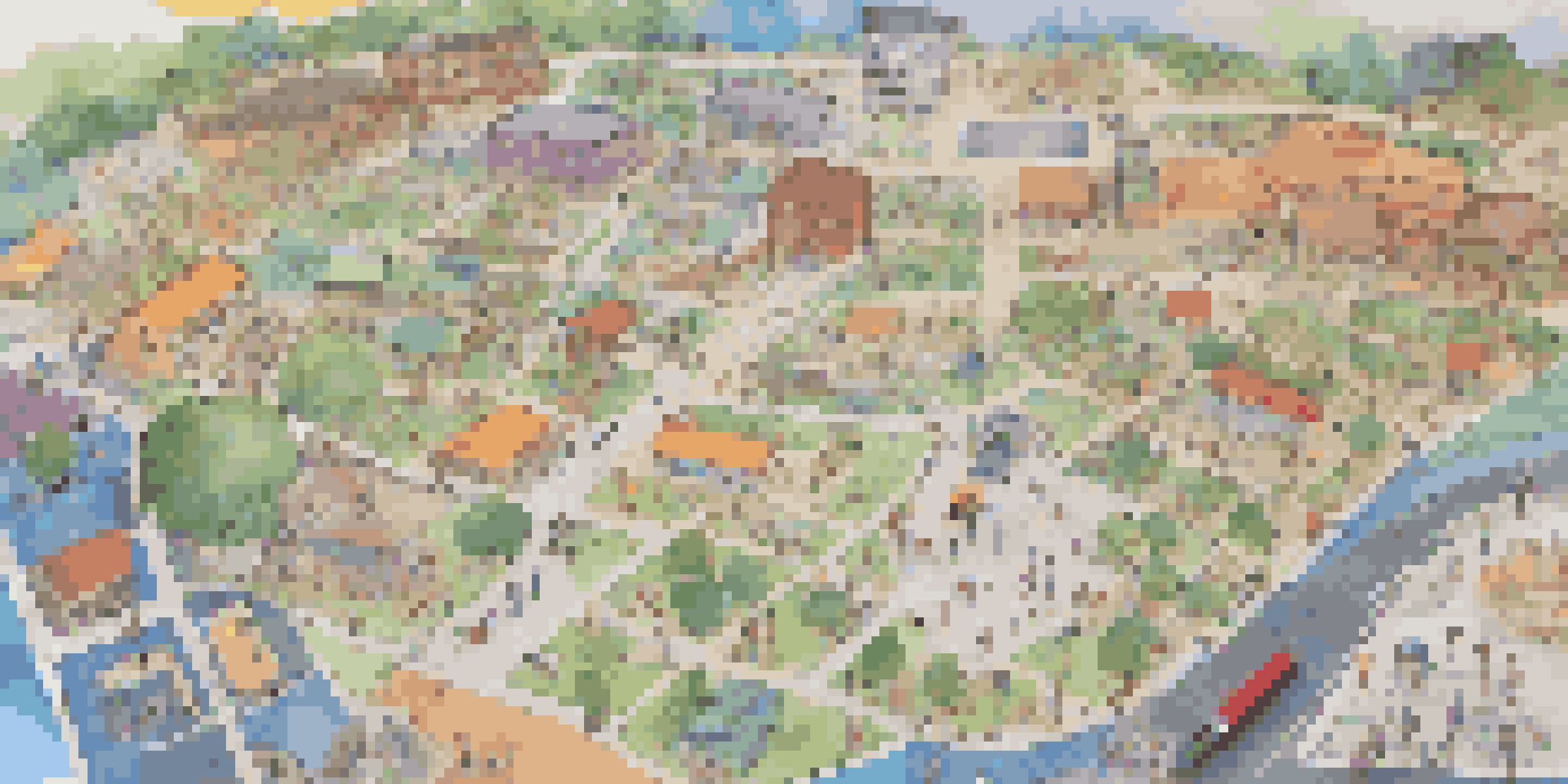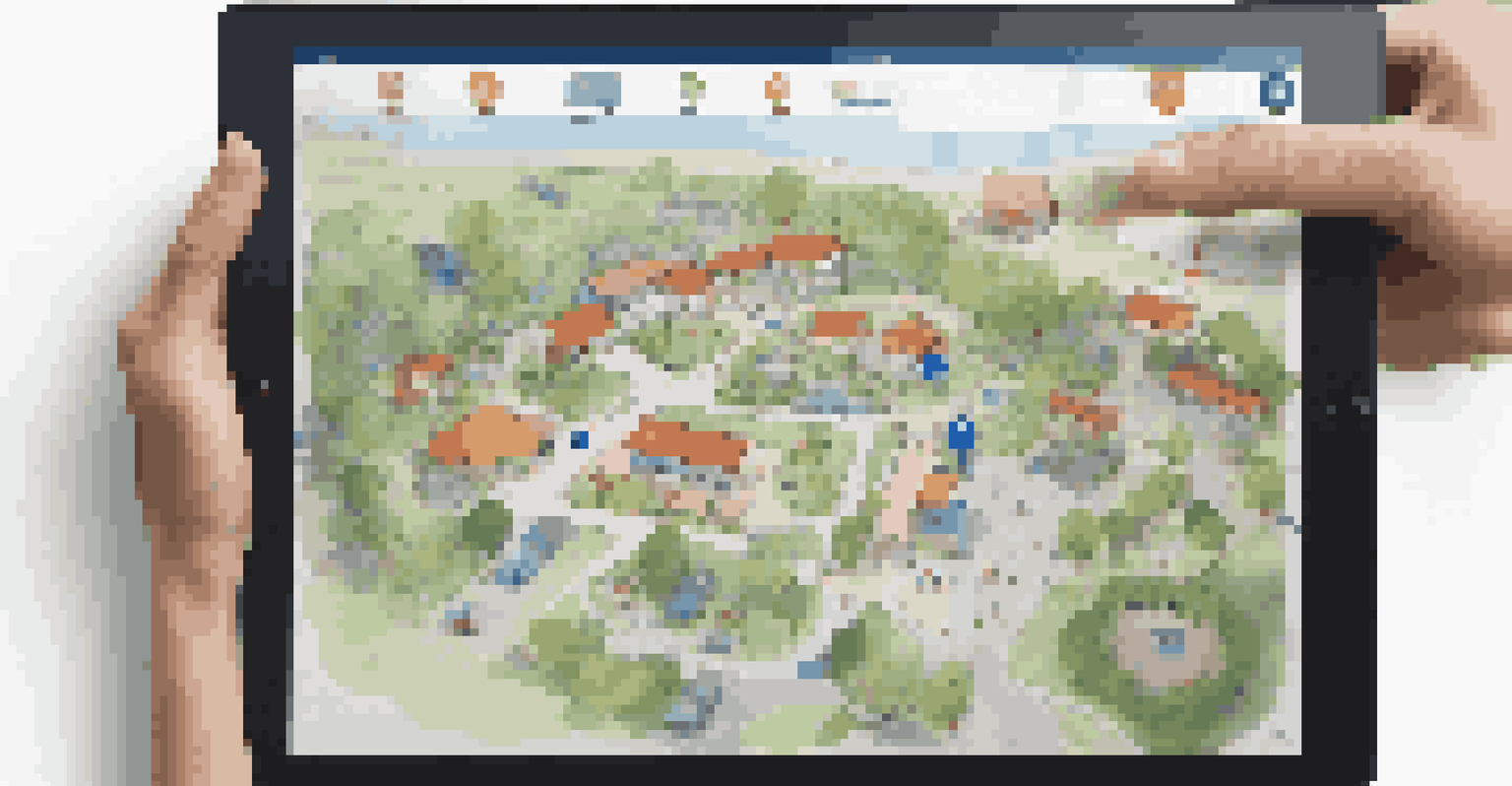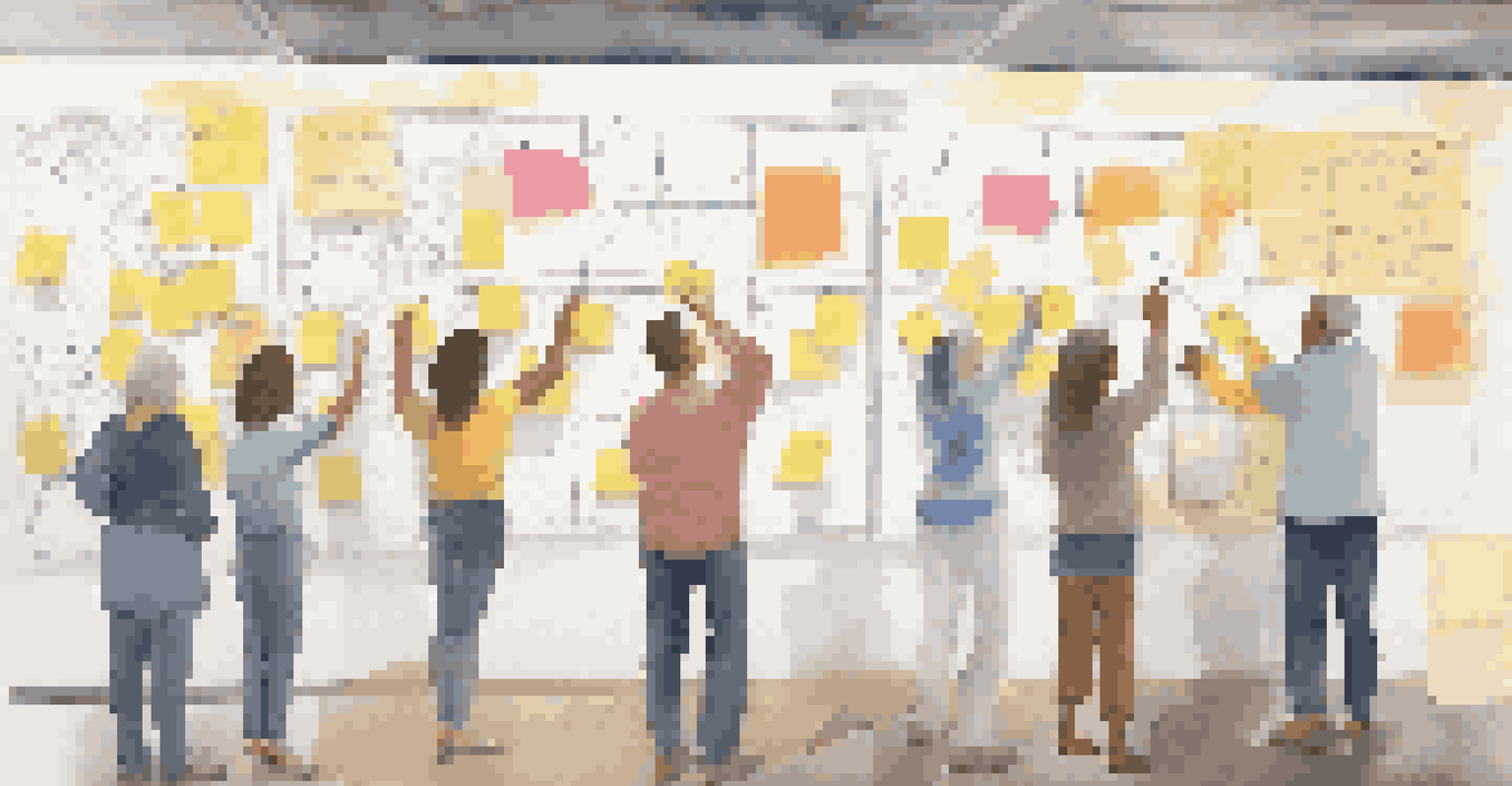Community Resource Mapping for Better Health Outcomes

Understanding Community Resource Mapping and Its Importance
Community resource mapping is a process that identifies and visualizes the assets, services, and resources available in a community. It plays a crucial role in recognizing the strengths within a community, from healthcare facilities to recreational areas. By mapping these resources, stakeholders can better understand the landscape of services available to residents, enabling improved access to care and information.
The greatest healing therapy is friendship and love.
Imagine a treasure map, but instead of gold, it highlights healthcare services, food banks, and community centers. This visual representation can reveal gaps in services or areas where resources are underutilized. By having a clear picture of what's available, communities can better strategize on how to enhance health outcomes and support residents in need.
In essence, community resource mapping not only helps to identify existing resources but also fosters collaboration among different entities. When community members, health organizations, and local governments work together, they can create a more comprehensive approach to health promotion and disease prevention.
The Role of Data in Community Resource Mapping
Data collection is a cornerstone of effective community resource mapping. By gathering information about health services, demographics, and community needs, stakeholders can paint a clearer picture of the current situation. This data-driven approach is vital for making informed decisions and prioritizing which areas require immediate attention.

For instance, a community may find that there are numerous health clinics but very few mental health services. By pinpointing these disparities, the community can focus its efforts on developing resources that fill these gaps. Data not only highlights what exists but also illuminates what is missing, guiding efforts towards more equitable health outcomes.
Mapping Reveals Community Resources
Community resource mapping identifies and visualizes available assets, enabling better access to essential services.
Furthermore, utilizing technology can enhance data collection efforts. Mobile apps and online surveys can streamline the process, ensuring that information is accurate and up-to-date. As the saying goes, 'knowledge is power,' and in the context of community health, this couldn't be more true.
Engaging Community Members in the Mapping Process
Community engagement is vital for successful resource mapping. Involving community members in the process ensures that the mapping reflects the true needs and wants of the population. When residents have a say in identifying their own resources, they feel more invested in the outcomes, leading to higher participation and utilization of available services.
In the middle of difficulty lies opportunity.
Consider organizing community workshops or focus groups where residents can share their insights on resources they value or areas they feel are lacking. This participatory approach not only enriches the mapping process but also builds a sense of community ownership. When people feel heard, they are more likely to engage actively in improving their health environment.
Moreover, fostering relationships with local leaders and organizations can amplify efforts. These stakeholders often have the trust of the community and can help bridge the gap between residents and resources, ensuring that everyone is on the same page when it comes to health initiatives.
Identifying Gaps and Opportunities through Mapping
One of the most significant benefits of community resource mapping is its ability to identify gaps in services. By analyzing the mapped data, communities can easily spot areas where resources are lacking or where there is a high demand for specific services. This insight is critical for developing targeted health initiatives that address the unique needs of the population.
For example, if mapping reveals that there are no nearby exercise facilities in a low-income neighborhood, community leaders can advocate for the development of parks or fitness programs. This proactive approach not only improves health outcomes but also promotes a sense of empowerment among residents who see their needs being addressed.
Data Drives Resource Allocation
Effective mapping relies on data collection to highlight service gaps and prioritize community needs.
Additionally, identifying opportunities for collaboration can arise from this mapping process. Organizations can partner to offer combined services, such as health screenings at community events, making resources more accessible and integrated into the community fabric.
Leveraging Technology for Enhanced Mapping Efforts
In today's digital age, technology plays a pivotal role in community resource mapping. Geographic Information Systems (GIS) allow for sophisticated mapping techniques that can analyze spatial data, revealing patterns and trends that may not be visible otherwise. This tech-savvy approach can elevate the mapping process by providing deeper insights into resource distribution and accessibility.
For instance, using an interactive online map can help residents find local resources quickly. They can search for services like clinics, food assistance, or mental health support, making it easier to connect with what they need. This convenience can lead to increased utilization of services, ultimately improving community health outcomes.
Moreover, technology can facilitate ongoing updates to the resource map, ensuring that it remains relevant as community needs evolve. Regularly collecting feedback and data can help adjust resources and services in real-time, creating a dynamic and responsive health environment.
Building Sustainable Partnerships for Long-Term Impact
Sustainability is key when it comes to the success of community resource mapping initiatives. Building long-term partnerships among local organizations, health providers, and community leaders ensures that resources are consistently utilized and updated. These collaborations can lead to shared goals and a unified approach to improving health outcomes.
Think of it as planting a garden; it requires ongoing care, collaboration, and commitment. By working together, community partners can cultivate an environment where health resources flourish and meet the evolving needs of the community. This collaborative spirit not only strengthens existing programs but also fosters the creation of new initiatives that address emerging health challenges.
Engagement Fosters Community Ownership
Involving residents in the mapping process enhances participation and ensures the resources reflect their true needs.
Additionally, sustainable partnerships can help secure funding and resources necessary for ongoing mapping efforts. By demonstrating the positive impact of collaboration, communities can attract grants and resources that further enhance their health initiatives.
Measuring Success: Evaluating Health Outcomes Post-Mapping
After implementing community resource mapping, it's essential to evaluate its impact on health outcomes. Measuring success involves tracking various health indicators, such as access to services, health improvements, and community engagement levels. This data not only highlights the effectiveness of the mapping efforts but also guides future initiatives.
For instance, if a community resource map led to increased access to mental health services, tracking the community's overall mental health indicators would demonstrate the initiative's success. This evidence can motivate stakeholders to continue investing in and expanding resources, ensuring that health improvements are sustained over time.

Moreover, sharing these success stories with the community can further enhance engagement. When residents see the positive changes resulting from their involvement in mapping efforts, it reinforces the value of participation and encourages ongoing collaboration in future health initiatives.